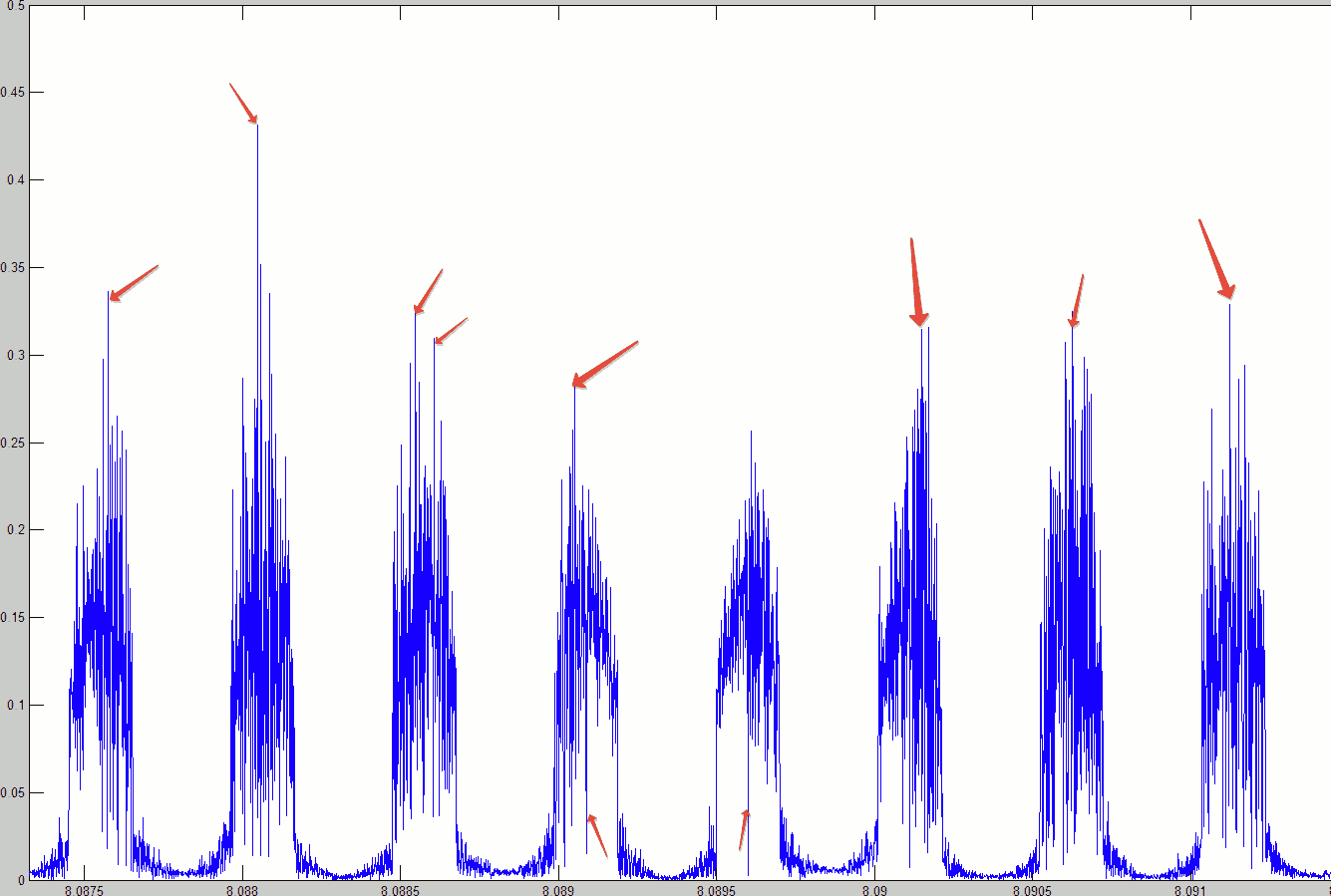I sent a lot of different signals using USRP + gnu radio "specially with flat characteristic in frequency domain" but I notice some strange behavior, that the received signals has some spikes. For example, I attached OFDM signal mentioned this behavior in red.
I believe what we're looking at is the time domain magnitude of an OFDM signal in complex baseband, right?

In that case, I'm not surprised -- OFDM classically has what is typically called a Peak-Average-Power-Ratio (PAPR) problem .
Since you know how OFDM works: Assume you feed it a symbol vector of all the same symbols. What does the time domain signal look like?
Considering that, these spikes aren't even really high; eyeballing the average power during OFDM transmissionto be around digital 0.15, a maximum peak of three times that isn't really what I'd even consider a spike -- it's not even 5dB higher than the avarage; and considering the noise floor seems to be somewhere around 0.005, your receiver doesn't even need 20dB of dynamic range.
Is it because of some properties of USRP?I doubt that; unless you're driving your USRP's frontend's amplifier very hard, you should have 20dB spurious-free dynamic range without problem.
Best regards,
Marcus
On 23.10.2015 15:19, scott tiger wrote:
MaksimBest regardsI sent a lot of different signals using USRP + gnu radio "specially with flat characteristic in frequency domain" but I notice some strange behavior, that the received signals has some spikes. For example, I attached OFDM signal mentioned this behavior in red. Is it because of some properties of USRP?Thank you very much Tom and Marcus for your response.One another question:
P.S. the signal sent using a short cable as an environment, so the received signal should be approximately the same as the transmitted.
Thank you for your reply
On Thu, Oct 15, 2015 at 4:43 PM, Marcus Müller <address@hidden> wrote:
Hi Tom, hi Maksim,
problem being that afaik we don't have stuff to parse the metadata file sink data to something matlabby. But maybe I'm wrong and someone already went and did the specific task of using the python module[1] to first parse the file and then the segment headers, and push them into a matlab-compatible storage format.
Best regards,
Marcus
[1] from gnuradio.blocks import parse_file_metadata
On 10/15/2015 04:20 PM, Tom Rondeau wrote:
On Thu, Oct 15, 2015 at 7:54 AM, Marcus Müller <address@hidden> wrote:
Hi Maksim,
you're right, the raw sample data can't contain any sideband information such as to what the USRP was tuned to.
Maybe you just want to use the "tag debug" block to print out the sample offsets at which an rx_freq tag was seen, and parse that textual information.
Best regards,
Marcus
On 10/15/2015 12:13 PM, scott tiger wrote:
Dear all,
I tried to implement the frequency hopping and I did it, But I have one problem. After stored the signal in dat file and tried to separate the frequencies in matlab "it is imposible to do that".Can you tell me please if there is some block in GNUradio which can I use to store the changing frequency to be comparable whith the received signal to cut the received signal according to the generated frequency?
Thank you for any adviceMaksim
I'd recommend the file mete sink:
You can read about the file metadata format here:
Tom
_______________________________________________
Discuss-gnuradio mailing list
address@hidden
https://lists.gnu.org/mailman/listinfo/discuss-gnuradio